

Today we’d like to introduce you to Mark Jeffery and Judd Morrissey.
Judd and Mark, please share your story with us.
I co-founded Anatomical Theatres of Mixed Reality (ATOM-r) in 2012 with my long-term collaborator, Mark Jeffery. We are a collective merging live performance with a range of emerging technologies including mobile augmented reality. Combining movement, text, costumes, objects, and computational visualizations on large and small screens, our work has evolved into a unique hybrid art form that is shown in contexts relating to dance, theater, poetry, visual art, and performance art. In ATOM-r’s performances, tattoos on the body or ornamentations on costumes can be scanned with a smartphone to unveil virtual extensions of the work in the form of texts, images, videos, and 3d objects. The ATOM-r performance space is often populated with a distribution of virtual poetic texts that are mapped to nearby geographic coordinates and visible only through the camera of a mobile device. Our work attempts to construct a theatrical space of visual poetics operating as a threshold between the physical and virtual.
As the writer and coder for ATOM-r, my role reflects my trajectory as an artist working with language, computation, and performance. In college, I studied literature and creative writing but my practice took unforeseen directions through a series of chance encounters and occurrences. My early collaboration with the sound artist and technologist, Lori Talley, opened my practice up to include a multimedia direction. In 1996, Lori and I were exposed to the work of the Chicago-based Goat Island performance collective, an experimental collaboration combining movement and text with experimental compositional structures and spatial configurations. For example, Goat Island would use conceptual instructions called “directives” (such as perform an impossible task or perform for the dead) to generate text and movement and would engage mathematical structures like the fibonacci number sequence to arrange their work. I was working on a text at the time and the performance provided me with a key for solving the puzzle at the core of the writing. The members of the group and a transcription of their performance, How Dear To Me The Hour When Daylight Dies, appear in my earliest manuscript that would later become an internet-based digital novel. For years, afterward, I would notice my hands fluttering rapidly at my sides as I prepared to work, imitating a gesture of “shivering homage” unconsciously borrowed from the group’s choreography.
Shortly after this encounter with Goat Island’s uniquely infective experiment, a poet who recognized a resemblance between my writing and early non-linear, interactive, computer-driven narratives called hypertexts suggested that I pursue my MFA at Brown University. At Brown, the novelist Robert Coover, who in a 1992 article in the NY Times had announced the end of books, was overseeing his vision of a new electronic literature that would realize possibilities beyond the constraints of the printed book.
After developing a practice in the emerging field of digital literary art at Brown and creating works now well-known in the history of what is often collectively referred to as electronic writing, I moved to Chicago in 2002 to teach at the School of the Art Institute of Chicago. It was then that I met Mark Jeffery, who had performed in the Goat Island work years earlier, and I began to collaborate with both Mark and the company. As creative and life partners over the course of 15 years, Mark and I produced work that combined our interests and backgrounds in electronic writing, visual art, performance, choreography, site practice, and technology, collapsing our diverse influences into a specifically unique interdisciplinary artform. Our current project, ATOM-r, grows out of this matrix of influences and what we discovered over years of diverse experimentation together.
In 2012, we formed Anatomical Theatres of Mixed Reality (ATOM-r), a decade into our collaboration. While traveling in Scotland researching Sir Arthur Conan Doyle and the history of forensics for a commissioned project, we encountered the architectural form of early modern anatomical theatres. Dating back to the 16th century, anatomical theatres are still used as educational spaces in the field of medicine, facilitating the observation of surgical procedures. Historically, these spaces – intended both for training physicians and to engage the curiosity of the general public – have taken the form of elliptical or octagonal multilevel amphitheaters designed for viewing human surgeries and dissections from overhead. ATOM-r was created in the image of this space apprehended as a metaphor to explore relationships between technology and the body. The work often draws upon historical instances of queer bodies and the anatomical and medical dimensions of their narratives. Our first work, The Operature, juxtaposed embodied research from the early history of surgery with the story of Samuel Steward, a 20th-century writer and tattoo artist who kept a card catalog notating and loosely encrypting details from thousands of his then-illegal homosexual encounters. Our recent work, Kjell Theory, delves into the archives of computing pioneer Alan Turing who was bio-medically castrated by forced estrogen treatments as punishment for his sexual affair with a young man. The work of ATOM-r enacts these narrative relationships between the human body, medicine and technology through the use of augmented reality in which the physical and the virtual are visually layered and everyday devices such as smartphones are used to excavate and dissect the texts, bodies, and spaces at play, connecting the experience of viewing performance with the role of observation in the historical operating theatre.
Mark Jeffery (MJ): Choreographer
I am the son of a farm laborer and the house I was born in 1973 was a ‘tied’ cottage – the house came with the job. This was in a rural village called Doveridge with a population of 500 in the county of Derbyshire in the UK. My father worked 14 hour days, 7 days a week and milked over 100 cows twice a day morning and night, through all weather. We were working class and poor, dirt Dolly Parton poor. Dad raised calves, pigs, chickens, and cows that would be slaughtered and kept in the freezer for us to live on over the year. He kept a vegetable garden over spring and summer and autumn and the harvest of vegetables would be shared fresh as well as blanched and bagged and placed into the freezer for us to live on over the winter months. There was no heating upstairs and there was one fireplace in the dining room for heat.
In 1976, at the age of 3, my birth mother left the family home and left the family for another farmer who lived a mile away up the road. After she left, I never saw her again, until a brief time when I was 19 but realized that I was not able to accept her as my mother and have not seen her since. Dad got custody of all 4 children (3 sisters and myself) and was able to raise us whilst still working, with us being looked after by a neighbor, my aunt, and my gran. Dad would cook, sew, wash up, clean the house all whilst still be working. Dad remarried in 1979, and Alma would become our mother. She worked at the local butcher’s store in the neighboring town and as a young child I would go with her to the butcher’s during school holidays and watch her work as well as help to cut, chop and bag the various meats that were sold. I grew up in a time in the UK that was very conservative during the Thatcher years, a school was hard and when you have ginger hair and at the time you don’t realize but other kids do that you are gay can be quite a combination of extreme abuse and bullying.
Despite all this, I was always wanting to perform, to be seen, to be liked. I was in a number of school productions at both primary and secondary school and always remember as a 3-year-old with big ginger hair singing Glen Campbell’s Rhinestone Cowboy in the living room and my dad’s best friend’s house on a swivel chair. I always wanted the attention of people in the room.
My life is an accident, and an accident of being given opportunity through the teachers that I worked with at early age through to this day. I left secondary school to attend a local community college from 16-18 where I would take a two-year performing arts course. The three teachers on that course came from experimental theatre, dance and performance art and opened up a worldview for me that I didn’t know existed. In their teaching, I learned through dance of Martha Graham and of Brecht and Stanislavski in theatre.
On the television, at the time in the UK, there was an experimental station called Channel 4. There were a total of 4 TV channels in the UK at that time. This station showed experimental film and dance and I was able to watch with the sound turned down low on a black and white TV in my bedroom the films of Derek Jarman, Peter Greenaway, Sally Potter and the dance work of DV8 and Lea Anderson with her all male company The Featherstonehaughs and all female dance company The Cholmondeleys. I also did a paper round from age 12 to 18 and would deliver newspapers on my bike around the village at 6 am every morning. I learned about the world through the tabloids and broadsheets each morning as I posted them through the mailbox, reading both liberal and conservative views on the covers each day. There was also a visual magazine called The Face that was published once a month that allowed me to see and have access to fashion, art, music that was avant-garde and gave me a worldview of culture that was not in the village I was raised in, and finally, there was MADONNA.
I applied to a number of Drama schools at 18, none of them I got into, I thought I was going to be an actor. One of my teachers suggested I apply to a new course called Visual Performance at Dartington College of Arts in the south west of England. This was the first Performance Arts degree in the UK and was taught by Sally Morgan. I thought with my theatre and dance portfolio I wouldn’t get in but I did and again an accident occurred as I started to learn about performance through the lens of fine art and working with the body, not as acting but performing the body as image, as if a moving photograph and working from a personal space of making my own work that was looking at my own trauma of loss and abandonment. I learned how to work from image making through movement, installation, and long durational performances.
In my second year of study, I was failing very badly with my work and was mentored by Sally Tallent who gave me a lot of support (I think at the time I was having a lot of anxiety and concern with my sexuality and trying to hide and feel shame around it). Sally suggested that I take a performance art workshop with two American Artists Lin Hixson and Matthew Goulish who were from Chicago and had a company called Goat Island. They would teach this two-week workshop in Bristol, UK. This workshop and way of teaching by Lin and Matthew gave me permission to work from a place and space of creative response, of learning how to make from a place of research and to connect the personal to the historical. It was a life-changing moment and a discovery on how to make the work I continue to make at 19 to now, 45. Leaving Dartington College of Arts, I moved to Bristol in 1994 and through mentorship of Diana Warden the Live Art Officer at Arnolfini Gallery I was given a 6-month residency and commission to develop two performances under her guidance in 1995/96.
Prior to this, I was also able to present my work at the International Performance Art Festival, National Review of Live Art under the direction of Nikki Milican in Glasgow. This allowed me a place to showcase my work to a new audience and to develop my work further in a professional context. Each invitation allowed the work to grow and each invitation moved the work forward. Goat Island was also in residence at Arnolfini in 1996 and I saw them develop the performance ‘How Dear To Me The Hour When Daylight Dies’ I would later see many performances of this work in Bristol and Cardiff.
In August of 1996, I received an unexpected phone call from Goat Island Director Lin Hixson in my home in Bristol. The call was to invite me to Chicago, 23 years old to learn the role of one of the Goat Island performers who had left the company. Goat Island had commitments to show the performance in their Wellington Ave Gymnasium space in late September. I had never left the country before, never been on a plane, I didn’t have a passport. I arrived in Chicago on September 4th, 1996 and went into rehearsal with each Goat Island member teaching me the performance together and separate in the humidity of the gymnasium space, three floors up in a church complex with the church sanctuary 3 floors below. I would continue to be on Goat Island for 13 years until we as a company ended in 2009. I would be part of 5 performances that we made together over the course of these 13 years, and that the performances would take up to two years to make. We would have work in progress presentations, as well as residencies and commissions from many art spaces across the world. Goat Island created a diverse and vast community with our performances and we would also teach from our practice and created a number of summer schools in Chicago, Glasgow, Bristol, Nottingham, Zagreb, Prague, Berlin. We were able to perform and tour our work in many countries and cities across the world.
On October 18th 2002 on encouragement from Matthew Goulish who had that afternoon taken me to the hospital to have a check in on the possibility with a lump I had found for testicular cancer (it was benign) that I take myself to the Roger Brown Study Collection to see performance and readings at this exhibition space in Chicago. There Judd Morrissey and Lori Talley were giving a reading from their electronic literature work The Jews Daughter. I had never seen anything like this before where the electronic and digital page would stay the same on the screen but each time it would write itself and the narrative and story would change. The page was always shifting as they read and navigated from the computer and what we as the audience saw on the projection screen. I was transfixed and that chance encounter when I wasn’t going to go out that night led to myself and Judd talking and then going for a drink and to start dating that led to us both being in a domestic and creative partnership for over 15 and a half years.
On May 8th, 2018, we parted as a couple but in our 15 and a half years together we created numerous performances, exhibitions, on and offline and had opportunities to present our work locally, nationally and internationally. We learned how to bring our practices together merging digital literature and writing with performance, installation, and movement. When Goat Island ended in 2009, in which Judd also was a member of this company we both started to look at our collaboration more closely – we were given a year long residency at Hyde Park Arts Centre in Chicago and had a studio space to develop our work. This year long residency created the form of our work that we continue today. The Precession was a 10 screen digital internet work as well as an installation and a series of performances.
At that time in 2010, we also began to work with other performers and as always with invitation allowed the work to move forward with the invitations we received. One Invitation from the Museum of Contemporary Art in Chicago allowed for us to work with 10 men and to create a performance in which we began to look at labor histories and how this could be performed in the museum. We interviewed museum visitors and then applied their responses as choreographic cues for the performer’s movements. The movements would be mapped by an overhead view of the night sky that Judd digitally mapped and projected in the museum. We were learning how to create data-driven choreographed systems and also to memorialize and honor the passing of my farmer father who had died in 2008. He had died from a massive trauma from falling from the roof onto the concrete milking parlor floor on February 28th, 2002 and was severely disabled for the rest of his life. The personal and the historical always connecting and entangling themselves and the performance of the floor and ground, and the instability of the body, the page, the shifting ground.
In 2012, Judd and I received a grant from the Chicago Dancemakers Forum to make a new work we would call The Operature. In the grant we proposed to look at Anatomical Theatres, gay sex (through the historical Chicago figure of Sam Steward who was a friend of modernist writer Gertrude Stein and catalogued every single sexual encounter he had in code in what he called his STUD FILE), and surgery as an architecture and framework for the performance. A reviewer of the grant saw that we were looking at anatomy and the body and connected us with the National Museum of Health and Medicine in Chicago and through this meeting allowed for us to be artists in residence at this museum from 2012 – 2016 to its closure. Space is important for all artists to make their work and this residency at the museum allowed for us to move the work forward and to perform The Operature with free use of rehearsal space and to have full access to the box office from the 3 weekends of performances we did in 2014. With us in residence at the museum we decided to formalise ourselves as a company that we call ATOM-r (Anatomical Theatres of Mixed Reality), a name that Judd came up with as a way to understand the mixing of the work we were doing under the research of the life, the digital and code and the merging of research that was being developed in Mixed and Augmented Reality.
ATOM-r in its 6 years of being a company has so far created 2 large scale performances and screen based exhibitions. These works have been supported directly by being in residence at the National Health Museum and then to us moving to the International Museum of Surgical Science in 2016 and now at The Graham Foundation for Fine Arts from 2016 onwards. These performances and exhibitions have toured across the world from Prague to Helsinki, to San Jose, NYC, London, Brighton, York and Wellington, NZ. In our practice, we have developed and funded the work through grants, residencies, box office, and also like the Goat Island model through teaching. Since graduating in 1994 and now 24 years later I have always kept in touch with my teachers, my mentors and the vast network of artists and presenters and former students. The work comes from work, the work comes from what I was taught as a young person on the farm and observing the work ethic of my father, the work comes from the creative, and seeing how each work moves from one space to another, and the work comes from giving yourself permission to not be afraid.
ATOM-r has begun to develop our new work The Beautiful Holy Jewel Home of the Original Rhinestone Cowboy, based on a house we discovered at the John Michael Kohler Arts Centre in Wisconsin: the art environment home of Loy Bowlin from Mississippi. Glen Campbell’s 1975 song ‘Rhinestone Cowboy’ prompted Loy to bedazzle his glasses, teeth, belts, and car with rhinestones. With construction paper, he created wallpaper graphics of glitter on every surface of the interior of the house. Loy had times of depression and anxiety and this home became a space and place for him to work through his loneliness and to become the Original Rhinestone cowboy. In our separation, Judd and I have decided to continue on our collaborative journey with ATOM-r and always with collaboration to allow the work to grow and to make the performance through discovering it together in rehearsal. The connection between performance, language, code, augmented reality and technology is important in how we respond to the work. It is always important to me that all voices in the creative process are heard and long time ATOM-r performers Chris Knowlton and Justin Deschamps always bring responsive material to rehearsal from the research that Judd and I bring in. I am learning how important it is for me to have creative voices in a room together and how important it is to me to have different voices in the room and how we learn from one another. Chris is a bio – engineer and dancer, Justin is a dancer and massage therapist, and new member Colin Roberson is a photographer and writer. Each voice brings new energy into the room for us to be creative.
For this new work, we are also continuing to work with our costume designer Grace Duval and she is bringing into the rehearsal responses to the Loy Bowlin rhinestone home through 1970’s carpets and rugs and sequins and glitter. At 45 I never thought I would be here, today as we look and research at the year 1975, the year Judd was born, the year I was singing Rhinestone Cowboy, at 45 and now in a place of loneliness and learning to work and walk through it, to deal with the pain of loss and trauma through the lens of the work and to channel and mine with Loy Bowlin and even though the ground is unstable, to learn how to work with instability and to allow the work to grow in ways we don’t quite yet know and to trust in this space Judd and I have created together for over 15 and a half years, now as creative partners.
Has it been a smooth road?
JM:
In my experience, the decision to change – to ask a new question, enact a directive, to begin or to end anything – generates a “road” that one encounters as a rapidly accumulating breadcrumb trail of signs, risks, demands, opportunities, and urgencies that must be creatively attended to if one is to arrive in the unknown of another town that might offer an uncanny, if temporary, sense of belonging. Ten years ago, Goat Island ended after 20 years of practice and the work itself became a process of ending, manifesting as a performance, The Lastmaker, and a large-scale digital writing project, The Last Performance [dot org]. What we learned through this creative euthanasia is that to designate something as last is to address the problem of lasting as in sustaining or moving forward. A last, it turns out, is a mold for making the shoes that one doesn’t know that they are wearing on the new unsmooth road that forms as a sort of semiotic puzzle in the flesh. ATOM-r has now entered into its own question of lasting since – as its co-founders – we made the decision to separate as partners in life but remain creative collaborators. As a directive, we agreed to acknowledge this in the interview and to see what this admission, if anything, changes for us. Having some experience with lasting, we live this change both within and outside of the new work. One starting point of this work is Loy Bowlin, the original rhinestone cowboy, a self-taught artist who converted his home into an elaborately bedazzled work of art, inspired at least in part by the challenges of being alone with oneself.
There are many concrete challenges when growing an experimental company and at the core is this process of lasting – ending, beginning, renewal – and the question of how to sustain financially and creatively. Taking an experimental approach and being perhaps radically open to new questions, new artforms, new technologies, has manifested in an unusual career both for myself and ATOM-r. While a more discrete disciplinary practice may have advantages in terms of levels of recognition and acceptance, the beauty of a diverse and open-ended practice is the unsmooth road that passes through diverse hospitable communities and audiences and paves its own unconventional and never certain but somehow enduring stability.
MJ:
I have been making performances and exhibitions now for 24 years. This past year ATOM-r has toured our work in two venues here in Chicago and taken the work to Chisenhale Dance Space and The Victoria and Albert Museum in London, to the Marlborough Theatre and Pub in Brighton and taught at the London South Bank University and the University of the Arts in Helsinki and to Lightbox in Detroit. These successes came from continued friendships some old and some new and to always accept the invitations, and to work always with the different contexts that each venue provided and to adapt and change the work for space and audiences we encountered. The work is never set and has to be adapted to each venue and as we have grown, so has the complexity of the performances and the technology. The technology that Judd provides is code driven and sometimes the code will create errors that will take longer to adjust in the time we are given to get into a performance or exhibition space. These obstacles we have learned to deal with, sometimes it can take us down a rabbit hole but we have also learned from the error from the mistakes that these can be included in the work and that the work needs to be seen and that the code, the machine is running and choreographing the work.
When Goat Island ended in 2009, this was a challenge to me as I am not good with change and when the ground you are standing on buckles you don’t know where to begin again. I thought that with the company ending I would not travel again and be part of the network I had grown up with across the world. In 2006 I was invited by the performing arts director at the Chicago Cultural Centre to curate performance for this venue. I worked with a friend Sara Schnadt and we came up with a night only performance of local, national and international performance artists that we called IN>TIME. We did our first night at the Cultural Centre in 2008. Since 2008, there are been 4 editions of this festival, now this coming February 2019, there will be a month-long performance festival engaging 14 venues across the city of Chicago commissioning 10 artists.
For this edition and it is 10 years on since Goat Island ended the artists commissioned will respond to the 9 Goat Island works as well as one artist responding to the entire company. It seems to me that in my 45 years I have always worked with struggle and obstacle and learned to somehow forge a pathway through the positive. I was told by Judd on Sunday at dinner that I am always persistent. I don’t think I am when at the time of change, of departure, separation, and goodbye to a mother, a father, a lover, a company that there is nothing ahead. I don’t see a future there for me at these moments of the ground falling away from me and nothing to hold onto and yet somehow the work always unfolds, questions get asked and new discoveries are made and new permissions are granted to let the work illuminate and dazzle my way forward. I always think of my work as my home, of my work being like the home I was born in, in 1973, the tied cottage that was given to my dad as part of his job, as long as he worked and milked the cows the house we were in would not be taken away from us. If I stop working the home (art), the work (art) will be taken away from me. The challenge is always to trick yourself into the unknown and to always work towards a series of questions that are difficult to process and only the work and working can address these questions, often times without answers. The tieing is entangled and complicated and comes with struggle and a ground unstable but that ground, that home, that house is all we have as artists. That’s why we all continue to make.
So let’s switch gears a bit and go into the Anatomical Theatres of Mixed Reality (ATOM-r) story. Tell us more about the business.
JM:
Anatomical Theatres of Mixed Reality (ATOM-R) is a collective exploring 21st-century embodiment through performance, poetics, and emerging technologies. The work mixes the live body with ubiquitous computing through an implementation of Augmented Reality (AR) in which virtual content is overlaid onto bodies and spaces.
ATOM-r was conceived when its co-founders encountered the architectural form of early modern anatomical theatres, small amphitheaters built for viewing human autopsies and surgical procedures. The collective uses this architecture symbolically to explore the altered and technologically augmented body, to dissect queer histories, and reveal embodied personal narratives.
The group performs, exhibits and teaches workshops in Chicago as well as nationally and internationally. By implementing an interdisciplinary approach, workshop participants learn to code through analogies of physical movement-based practice while re-thinking movement through the processes and temporal specifications of coding.
MJ:
ATOM-r (Anatomical Theatres of Mixed Reality) is a project by project collective co-founded by Judd Morrissey and myself. We are known for creating highly choreographed, digital and augmented reality performances, exhibitions, internet art, publications, and film. Our artwork attempts to entangle and complicate the contemporary through the lens of research, looking at queer histories of figures known and forgotten, to look at the strangeness and the surreal, to code personal narratives and to create a highly visual landscapes that appear over time in the live performance space as well as in the exhibitions. We are known for collaborating with a number of artists both emerging and established and to invite them into our process as a way to interrupt our own process and to absorb other people’s practices into our work and to learn from other people. ATOM-r has always engaged and mixed performance and language and to look at these forms through the lens of code and the digital. Over the years, this has become more and more integrated from audience members being able to participate in the performances through using their phones to ‘scan’ augmented reality markers on performers bodies, to the phone’s accelerometer creating physical and spatial choreography for the performers to move through and now in our most recent project for the performance to activate augmented reality portals where augmented reality content is overlaid on top of the performance of lush visual landscapes of language that is hyper-real and overflowing and maximal as a visual and visceral experience to watch.
I am always excited about being given an invitation and seeing where this invitation can lead the work and to always being open to the invite. This past winter we were able to perform our work at The Victoria and Albert Museum in London as well as The Marlborough Pub and Theatre, in Brighton – a small tiny theatre above a pub that programs queer based work. I am always happy when we can engage different audiences and different contexts and the strength of our work can be showcased in diverse and different settings from museums, to dance spaces, to theatres, to galleries to DIY venues. I am always excited for us to also travel our work and for the work to be shown across the world and to engage audiences and students in cities and towns and rural areas and to have lengthy conversations with audience members and students who we get to teach when we do a day long or week long teaching sessions. We have learned that the hybrid of our practices engages people to think outside of their own disciplines and to interact and to engage other disciplines and to connect with one another and to share ideas and be in a space with other artists that you would not normally come into contact with.
I always want to engage with people, I always want to learn and I always want to push the work into a new space that I don’t know. As someone who has a tendency to be grounded, and not like change, and does not move very quickly I always need to be looking outwards and to see what others are doing in front of me and to be influenced by artists, scholars, gardeners, and farmers. I left the farm when I was 18, I will always have this rich space of work that I took from this rural experience but I am always wanting to connect and see what else is taking place that is spatial, moving, and always in reinvention and being relevant through the research and making and never stopping.
Contact Info:
- Website: http://atom-r.com/
- Email: JM: jmorrissey@saic.edu, MJ: mjeffery@saic.edu
- Instagram: https://www.instagram.com/atomr_performance/
- Facebook: https://www.facebook.com/atomrmixedreality/
- Other: https://vimeo.com/user2965888

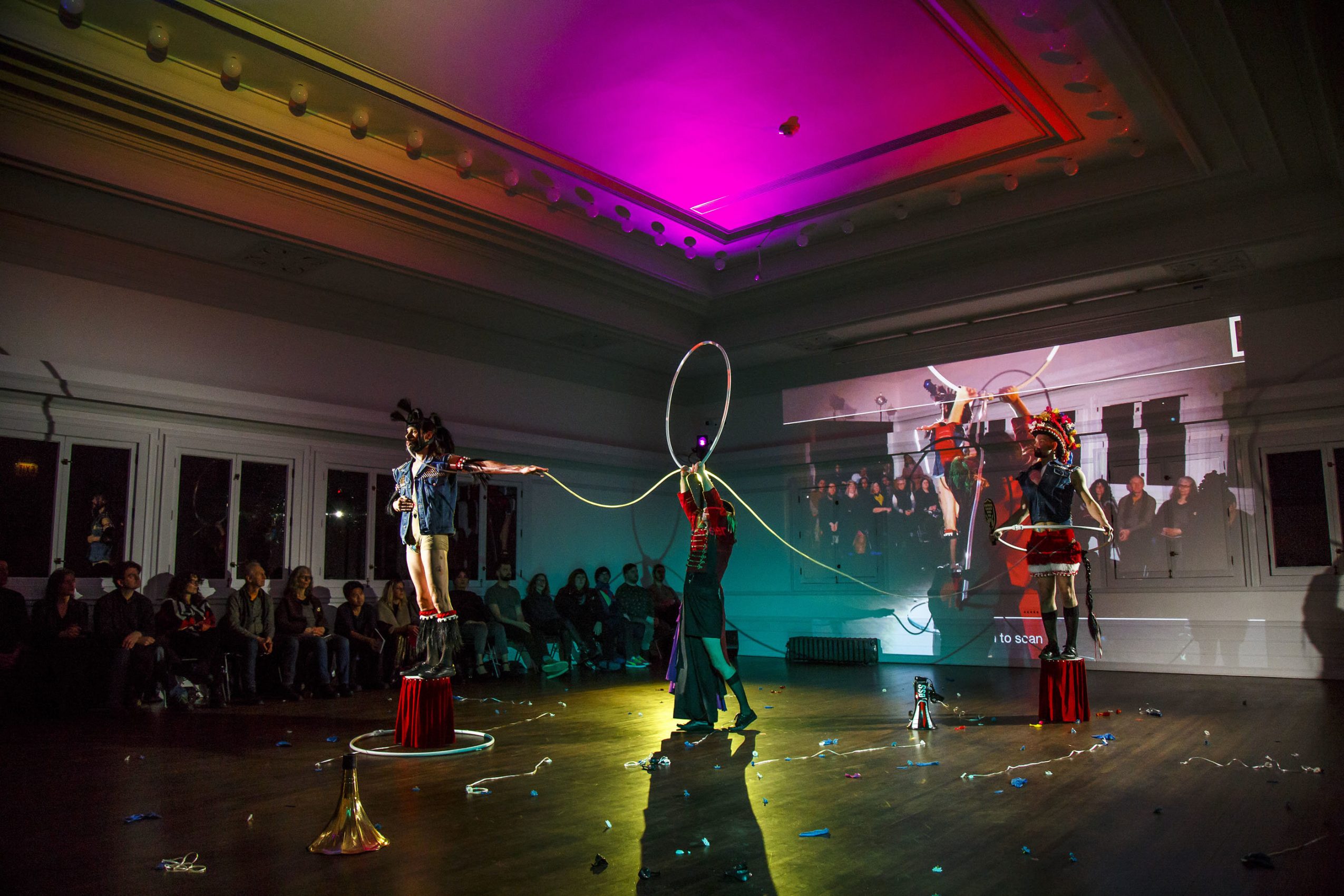
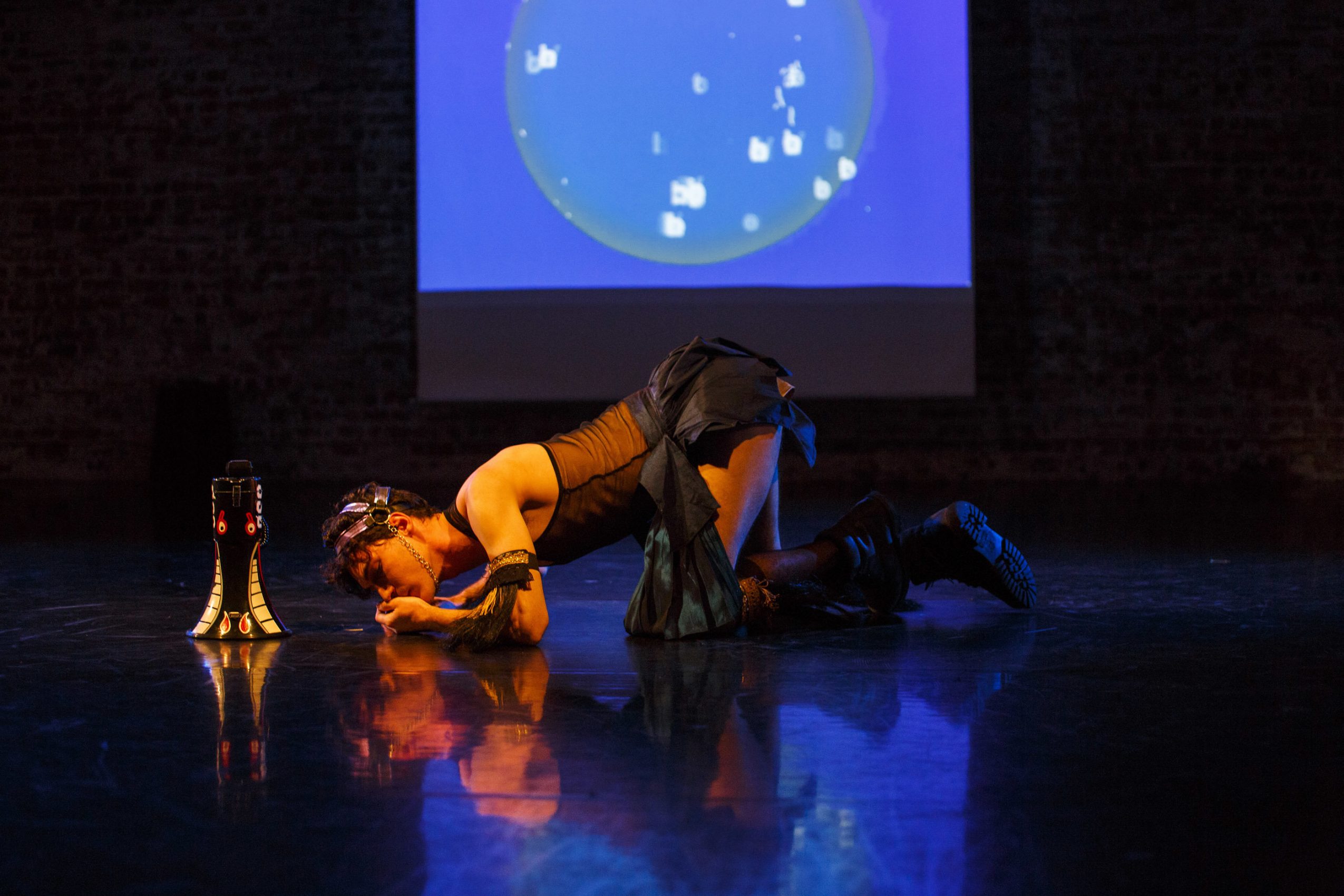


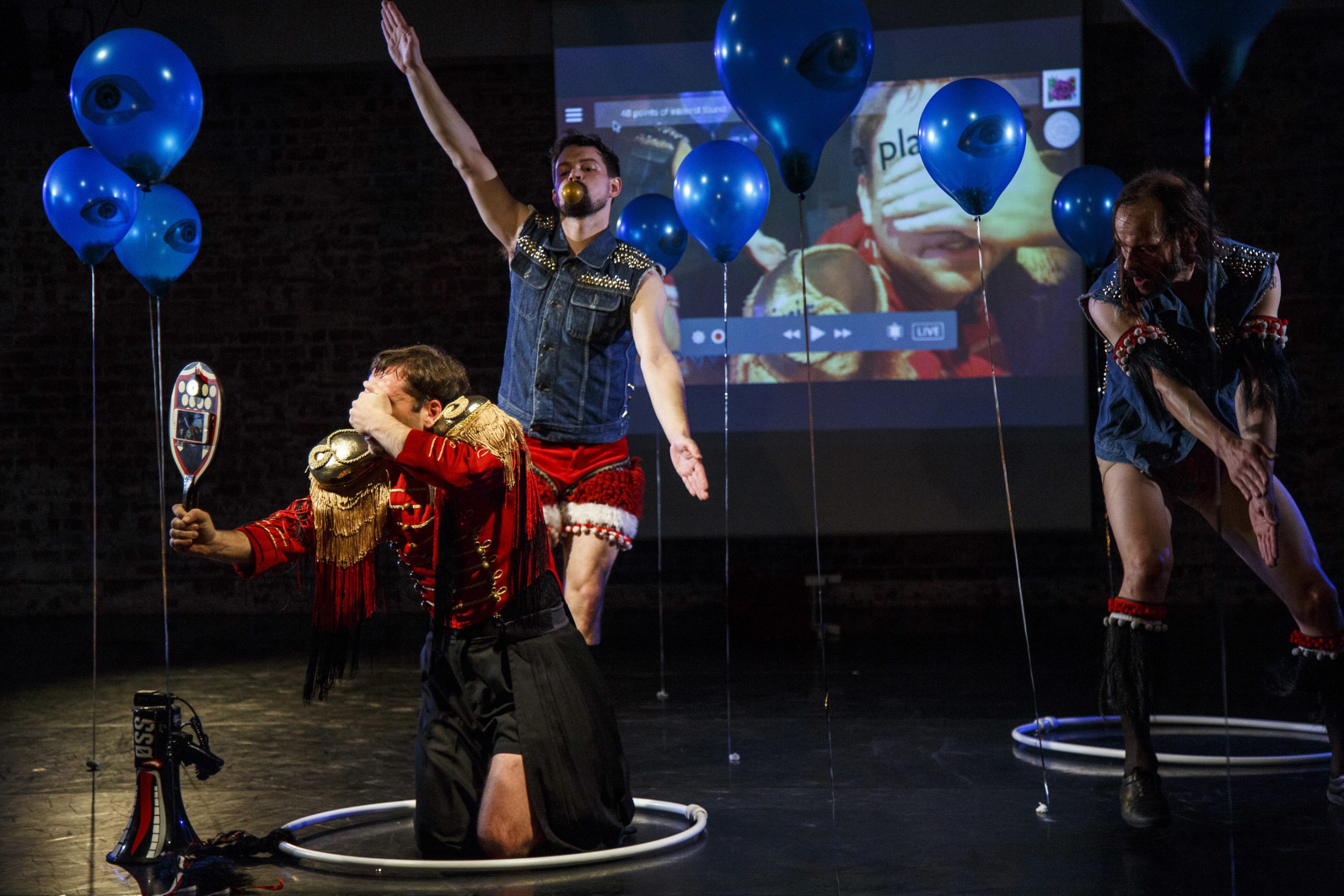
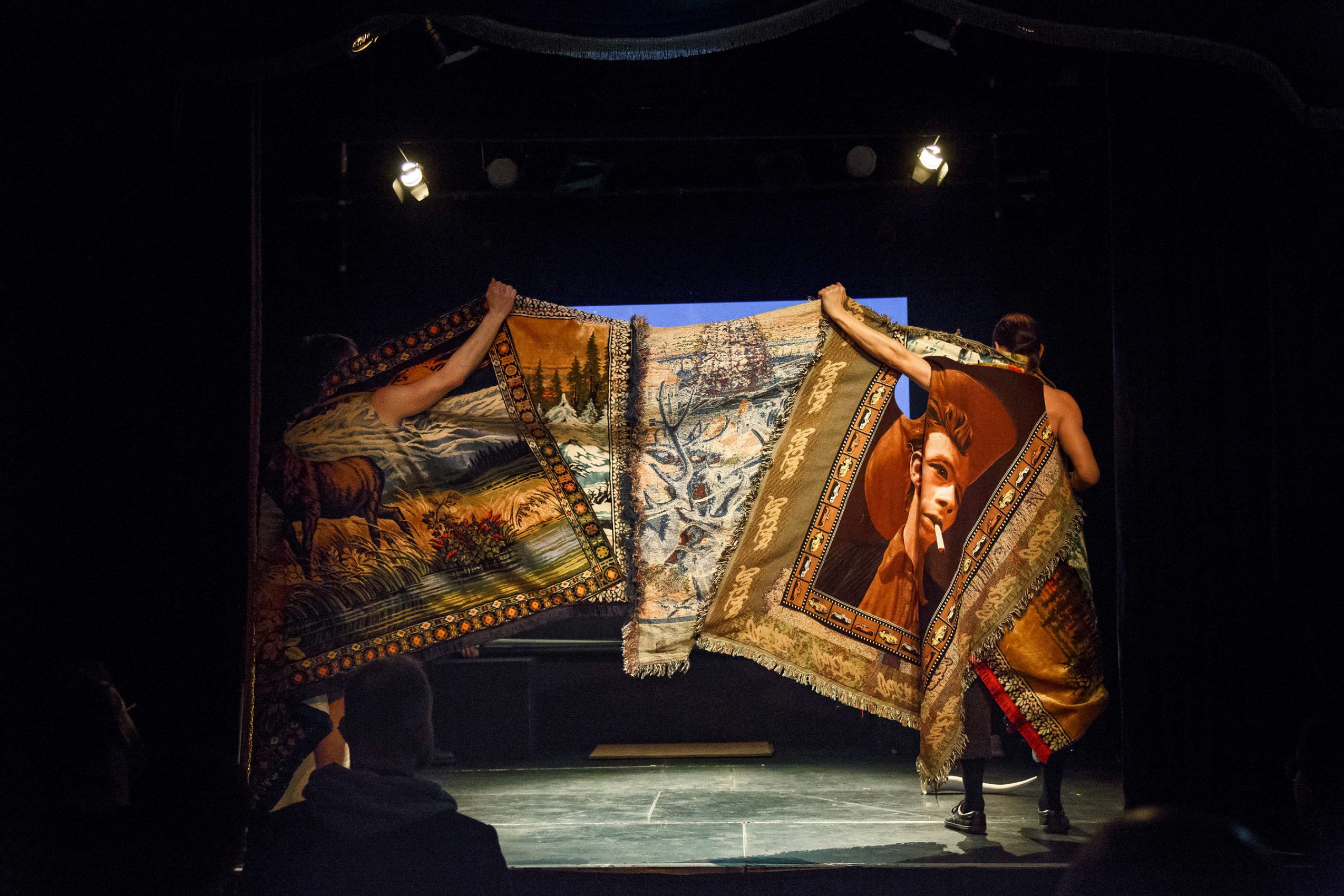
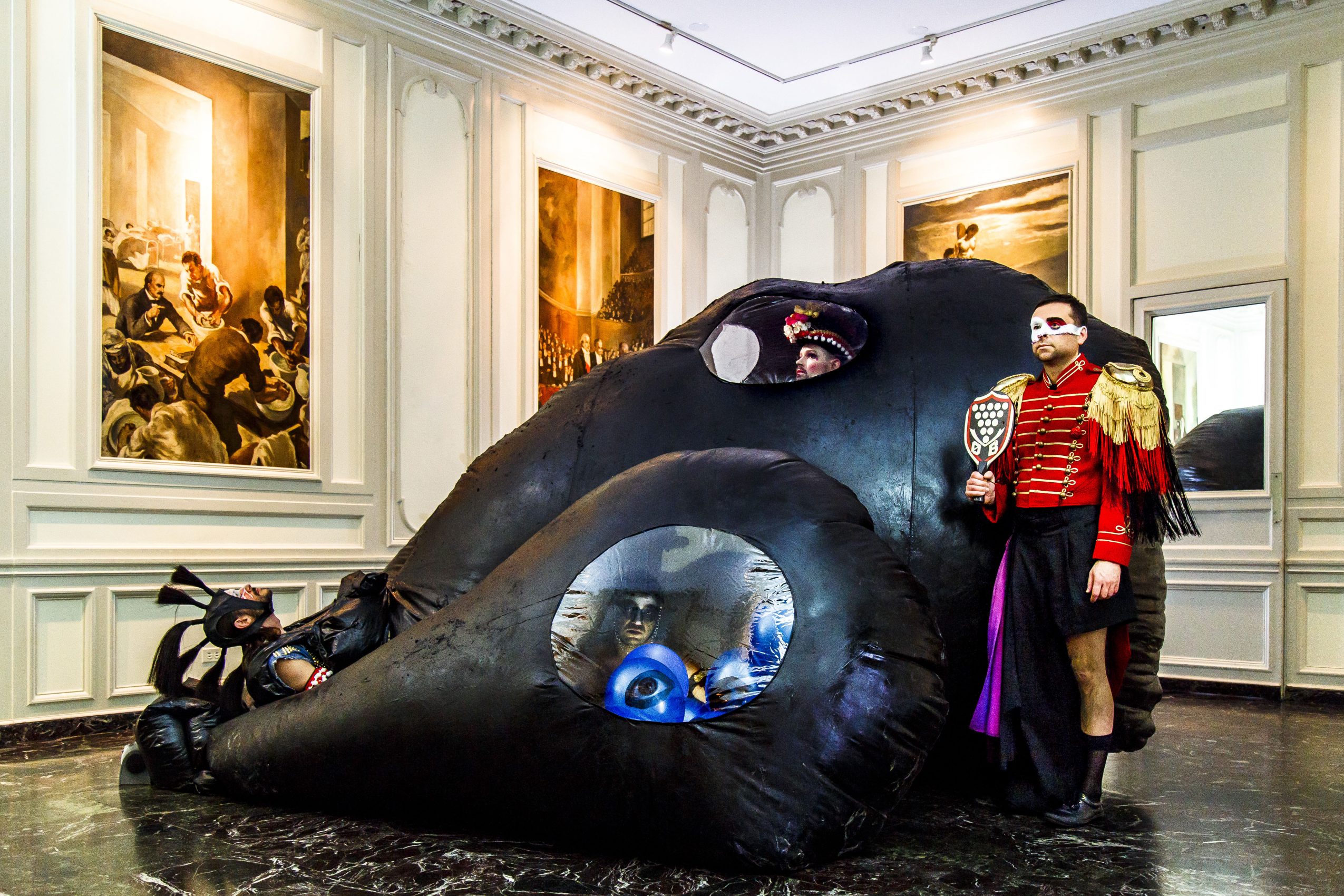
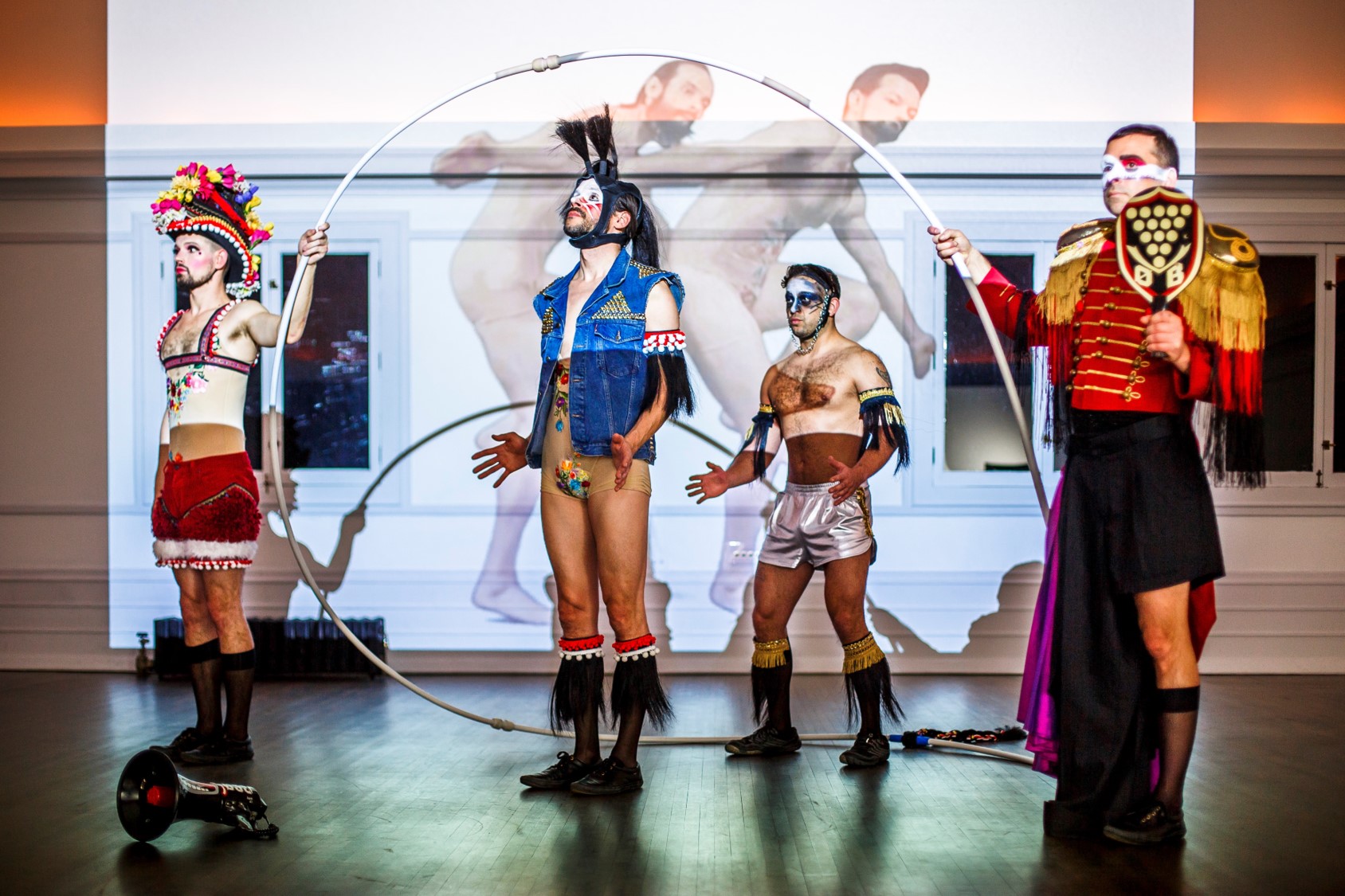 Image Credit:
Image Credit:
Grace Duval
Getting in touch: VoyageChicago is built on recommendations from the community; it’s how we uncover hidden gems, so if you know someone who deserves recognition please let us know here.
















